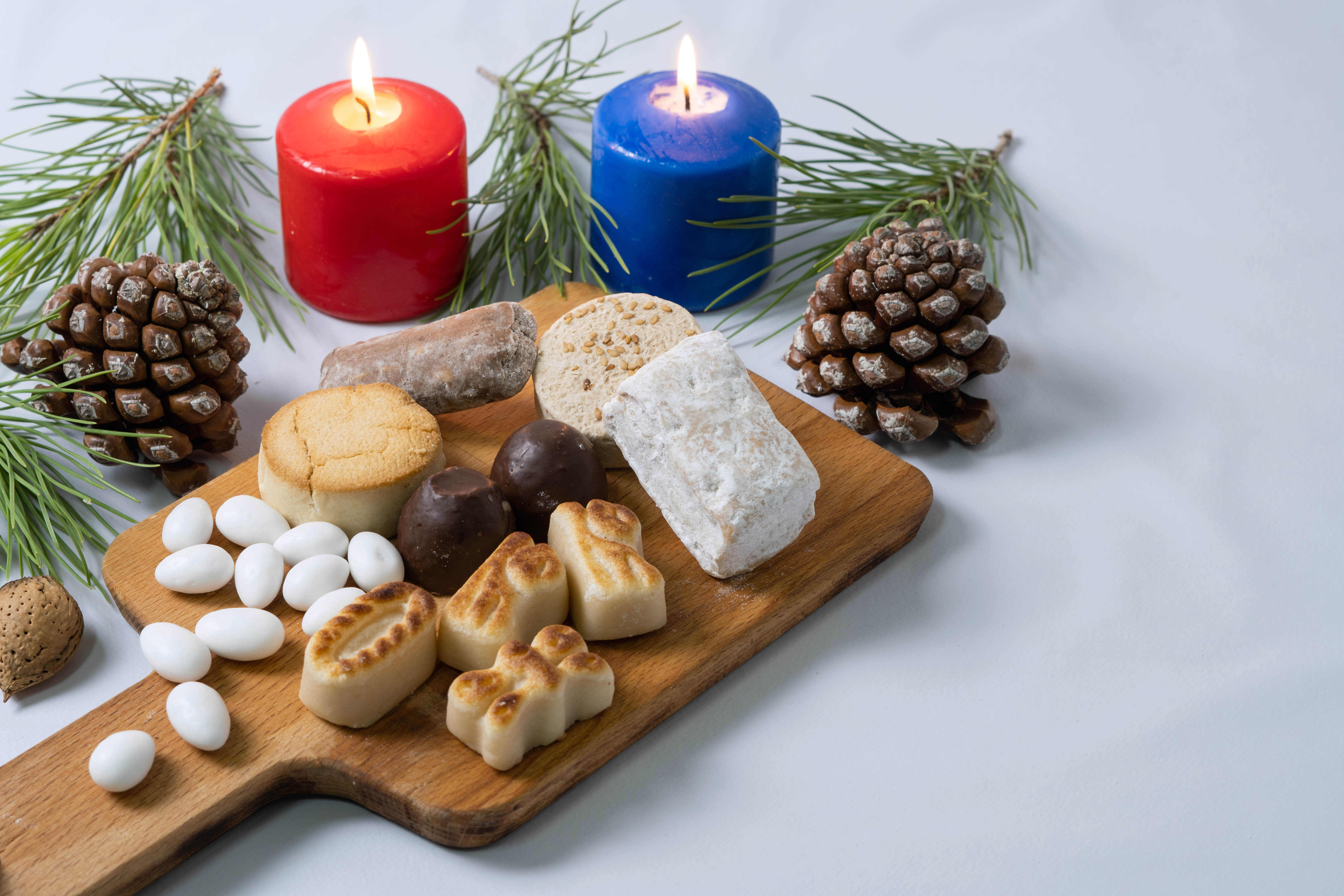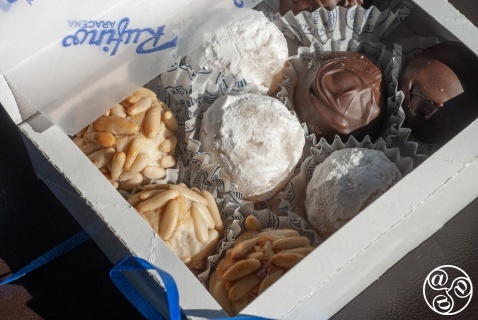
Traditional Spanish Christmas pastries (of the non-"turrón" type) add a special touch to the holidays with their own distinct flavours - and textures! |
|
Christmas Pastries
Traditional Spanish Christmas pastries (of the non-"turrón" type) add a special touch to the holidays with their own distinct flavours - and textures! Here is a look at some of the most popular specialities. Once upon a time they were only available in December and January, but that is changing. Nevertheless, it's only during the holiday season that you'll see them in such large amounts. In fact, in most supermarkets you can even buy them in bulk.
The pastries we're looking at here come wrapped in thin printed tissue paper that most often carry name brands our Spanish contemporaries have grown up with - yes, even the contemporaries of the oldest among us. Take the time to read the labels because many of these sweets are specialities that are produced in only one town in Spain, for example. Others are made from recipes handed down by generations of nuns at a certain convent or from a specific order.
While it appears that there are a zillion different types of Christmas pastries sold this time of year, in actual fact there are just two main categories on offer. The first is a kind of shortbread and the second are made from marzipan.
Shortbread style pastries
The shortbread style pastries are not made with butter as is the tradition in northern Europe, but rather with pork lard. And while this might sound less than appetising to the foreign taste, in fact you can be sure the sweets don't taste like pork and secondly that this form of fat is infinitely healthier than the new-fangled hydrogenated fats too many people gobble up without question.
Here are just a few names to look for when shopping for the shortbread variety of pastries: "polvorones", "mantecados", "nevaditos", "roscos" and "alfajares". Except for the "roscos", you'll find these treats in both plain, traditional versions which are simply made of flour, sugar and fat, or in the fancier, flavoured versions which are flavoured with lemon, cinnamon, chocolate or anis. The "roscos" are traditionally flavoured with anis.nJust a warning for those with nut allergies, often the aforementioned pastries do contain nuts or at least traces of nuts, so watch out!
Almond and sugar based pastries
In the next category we have the almond and sugar based marzipan treats which come in a wide variety of shapes and are usually lightly toasted. To the Spaniard, perhaps different brands taste slightly different, but to the newcomer, it's difficult to distinguish between one marzipan brand pastry and another.
Finally, there is one other pastry worth mentioning, but that wouldn't really create its own category and that's the "yema de huevo" (egg yolk) pastry. These are very sweet, yellow balls usually dusted in confectioners' sugar will melt in your mouth.
Serving
How and when do you serve all these delicacies? The Spanish tradition is to create trays of these treats - along with different types of turrón, chocolates and dried or candied fruits. After each meal the trays are set in the centre of the table and then covered and set aside for the next meal. Usually several boxes and bags of pastries are on hand to keep replenishing the trays. Often the treats are served alongside Champaign or coffee and tea as well.
See our recipe for Christmas Roscos.
Sharing is caring
In Andalucia, Christmas is a time of sharing, and the region's sweet traditions add an irresistible charm to the festive season. Every household proudly presents a shared platter of traditional treats, a delightful assortment of mantecados, polvorones, turrón, and pestiños, symbolising generosity and togetherness. These sweet delights are not confined to homes alone; most offices embrace the tradition with their own shared plates, fostering a spirit of camaraderie among colleagues. This sweet custom not only satisfies the taste buds but also serves as a heartwarming reminder of the joy in sharing and celebrating the festive with friends and family.
